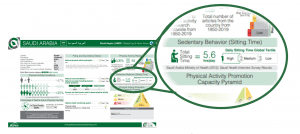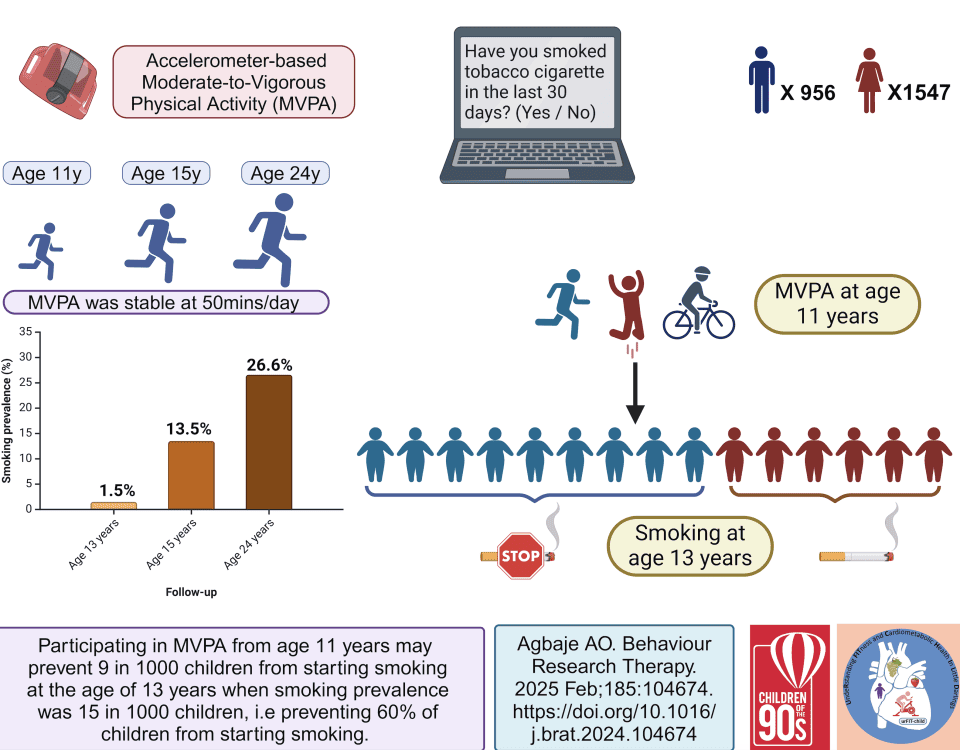
Seasons, weather, and device-measured movement behaviors: a scoping review from 2006 to 2020
February 17, 2021
Relationships between indices of sedentary behavior and hedonic well-being: A scoping review
March 4, 2021Today’s blog comes from Matthew Mclaughlin. More about the author can be found at the bottom of this post.
Sitting Time Metrics Added to Global Observatory for Physical Activity (GoPA!) Country Cards
For the first time, sitting time metrics have been added to the GoPA! Country Cards.
The inclusion of sitting time on the 2nd set of the GoPA! Physical Activity Country Cards is an important milestone, and one that reflects the maturation of evidence and discourse in the field of sedentary behaviour.

Figure 1: Example GoPA! Country Card showing sitting time metrics.
Sitting time was deemed the most appropriate sedentary behaviour metric due the underpinning epidemiological evidence linking excessive sitting time with negative health effects, its simplicity to interpret and the wide availability of country-level data.
The inclusion of sitting time on the Country Cards also marks a highly effective collaboration between GoPA! and the Sedentary Behaviour Council (SBC), both being councils of ISPAH.
 The 1st set of GoPA! Physical Activity Country Cards were launched in 2015, and these cards didn’t include any sedentary behaviour specific metrics. Since 2015, evidence has continued to accumulate affirming the health benefits of all intensities of movement. Concurrently, research into sedentary behaviour, viewed either as a distinct health behaviour or an integral component of daily time-use, has also grown.
The 1st set of GoPA! Physical Activity Country Cards were launched in 2015, and these cards didn’t include any sedentary behaviour specific metrics. Since 2015, evidence has continued to accumulate affirming the health benefits of all intensities of movement. Concurrently, research into sedentary behaviour, viewed either as a distinct health behaviour or an integral component of daily time-use, has also grown.
The identification of sources of sitting-time data was a comprehensive, multi-stage process, undertaken by a team of 25 ISPAH members who formed the Working Group. En route to inclusion in the Country Cards, we published our methods and findings “Worldwide surveillance of self-reported sitting time: a scoping review“. We also published an SBRN blog!
Sitting time data is included on 77 Country Cards in the 2nd Set of GoPA! Country Cards.
Publication of the new Country Cards provides an opportunity to reflect on the methods of the Sedentary Behaviour Global Monitoring Initiative, gather feedback from diverse audiences and explore how we can build on the foundations now in place.
A webinar on the ‘Science Behind the GoPA! Country Cards’ was recently held by ISPAH, and is available to watch here: https://youtu.be/Anqy_soykvQ?t=1986
About the author:


Matthew ‘Tepi’ Mclaughlin is a final year PhD candidate at both the University of Newcastle and Hunter New England Population Health. Tepi is a keen advocate for physical activity locally and globally, especially in school physical activity and active transport. Tepi leads up the communications arm of the International Society for Physical Activity and Health and was recently involved in the #8Investments That Work for Physical Activity advocacy document and toolkit development.
The Sedentary Behaviour Global Monitoring Initiative is a large team of over 25 members of the International Society for Physical Activity and Health. The team was initially led by Dr Andrew Atkin, before Matthew ‘Tepi’ Mclaughlin took over. Both Dr Brigid Lynch and Dr Katrien Wijndaele have provided significant direction for the initiative, establishing a relationship with the Global Observatory for Physical Activity (GoPA!). Dr Andrea Ramirez, Dr Michael Pratt and Dr Pedro Hallal form the GoPA! team who worked alongside the Sedentary Behaviour Council to enact including the sitting time data on the second set of GoPA! country cards.




